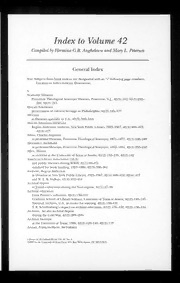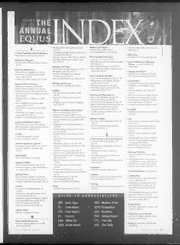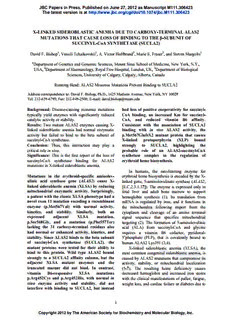
X-LINKED SIDEROBLASTIC ANEMIA DUE TO CARBOXY PDF
Preview X-LINKED SIDEROBLASTIC ANEMIA DUE TO CARBOXY
JBC Papers in Press. Published on June 27, 2012 as Manuscript M111.306423 The latest version is at http://www.jbc.org/cgi/doi/10.1074/jbc.M111.306423 X-LINKED SIDEROBLASTIC ANEMIA DUE TO CARBOXY-TERMINAL ALAS2 MUTATIONS THAT CAUSE LOSS OF BINDING TO THE β-SUBUNIT OF SUCCINYL-CoA SYNTHETASE (SUCLA2) David F. Bishop1, Vassili Tchaikovskii1, A. Victor Hoffbrand2, Marie E. Fraser3, and Steven Margolis1 1Department of Genetics and Genomic Sciences, Mount Sinai School of Medicine, New York, N.Y., USA, 2Department of Haematology, Royal Free Hospital, London, UK, 3Department of Biological Sciences, University of Calgary, Calgary, Alberta, Canada Running Head: ALAS2 Missense Mutations Prevent Binding to SUCLA2 Address correspondence to: David F. Bishop, Ph.D., 1425 Madison Avenue, New York, NY 10029 Tel: 212-659-6795; Fax: 212-849-2508; E-mail: david.bishop@mssm.edu Background: Disease-causing missense mutations had loss of positive cooperativity for succinyl- typically yield enzymes with significantly reduced CoA binding, an increased Km for succinyl- catalytic activity or stability. CoA, and reduced vitamin B6 affinity. D o Results: Two mutant ALAS2 enzymes causing X- Consistent with the association of SUCLA2 w n linked sideroblastic anemia had normal enzymatic binding with in vivo ALAS2 activity, the loa d e activity but failed to bind to the beta subunit of p.Met567GlufsX2 mutant protein that causes d succinyl-CoA synthetase. X-linked protoporphyria (XLP) bound from Conclusion: Thus, this interaction may play a strongly to SUCLA2, highlighting the http critical role in vivo. probable role of an ALAS2-succinyl-CoA ://w Significance: This is the first report of the loss of synthetase complex in the regulation of w w succinyl-CoA synthetase binding for ALAS2 erythroid heme biosynthesis. .jb c mutations in X-linked sideroblastic anemia. .org In humans, the rate-limiting enzyme for b/ y Mutations in the erythroid-specific aminolev- erythroid heme biosynthesis is encoded by the X- gu e s ulinic acid synthase gene (ALAS2) cause X- linked gene, 5-aminolevulinate synthase (ALAS2, t o n linked sideroblastic anemia (XLSA) by reducing [E.C.2.3.1.37]). The enzyme is expressed only in A p mitochondrial enzymatic activity. Surprisingly, fetal liver and adult bone marrow to support ril 4 a patient with the classic XLSA phenotype had a hemoglobin synthesis (1). Its translation from , 2 0 novel exon 11 mutation encoding a recombinant mRNA is regulated by iron, and it functions in 19 enzyme (p.Met567Val) with normal activity, the mitochondria following import from the kinetics, and stability. Similarly, both an cytoplasm and cleavage of an amino terminal expressed adjacent XLSA mutation, signal sequence that specifies mitochondrial p.Ser568Gly, and a mutation (p.Phe557Ter) targeting (2). The formation of 5-aminolevulinic lacking the 31 carboxy-terminal residues also acid (ALA) from succinyl-CoA and glycine had normal or enhanced activity, kinetics, and requires a vitamin B6 cofactor, pyridoxal- stability. Since ALAS2 binds to the beta subunit 5’phosphate (PLP), that is covalently bound to of succinyl-CoA synthetase (SUCLA2), the human ALAS2 Lys391 (3,4). mutant proteins were tested for their ability to X-linked sideroblastic anemia (XLSA), the bind to this protein. Wild type ALAS2 bound most common congenital sideroblastic anemia, is strongly to a SUCLA2 affinity column, but the caused by ALAS2 mutations that compromise its adjacent XLSA mutant enzymes and the activity, stability, or mitochondrial localization truncated mutant did not bind. In contrast, (5-7). The resulting heme deficiency causes vitamin B6-responsive XLSA mutations decreased hemoglobin and increased iron stores p.Arg452Cys and p.Arg452His, with normal in with the clinical manifestations of pallor, fatigue, vitro enzyme activity and stability, did not weight loss, and cardiac failure or diabetes due to interfere with binding to SUCLA2, but instead 1 Copyright 2012 by The American Society for Biochemistry and Molecular Biology, Inc. secondary toxicity from iron overload (2). The These studies provide new insights into the severity of the disorder (neonatal to late onset) functional roles of certain carboxy-terminal depends primarily on the amount of residual ALAS2 residues, identifying a region critical for ALAS2 mitochondrial enzyme activity. Structural the formation of an ALAS2/succinyl-CoA and functional studies of pure wild type and mutant synthetase (SCS) enzyme complex that ALAS2 have been facilitated using prokaryotic presumably is required for normal heme overexpression of a fusion protein to stabilize and biosynthesis in mitochondria, the disruption of solubilize the enzyme (8,9). Of all the XLSA which was caused by adjacent carboxy-terminal coding mutations, only p.Arg452Cys and mutations in two XLSA patients. p.Arg452His have been found to display normal ALAS2 enzymatic activity and thermostability in EXPERIMENTAL PROCEDURES vitro, suggesting that some other factor reduced ALAS2 activity in vivo (10). To date, at least 61 Patients- The proband was a 40 y/o male who different ALAS2 mutations have been discovered developed symptoms at 13 years of age. He was in 103 separate pan-ethnic XLSA kindreds (11-14), first seen at the Royal Free Hospital at age 14 (Bishop and May, unpublished). The disorder is when he was found to be pale and thin, but of often responsive to vitamin B6 therapy coupled normal growth and intelligence. He was anemic with phlebotomy or chelation therapy to remove with a hemoglobin of 8.5 g/dl, hematocrit 29.8%, D excess iron (11,15,16). 5.15 x 1012 red cells/liter, a mean cell volume ow n Recently, a new role for ALAS2 was (MCV) of 57 fl, mean cell hemoglobin lo a d discovered. Deletion/frameshift mutations encoding concentration (MCH) 16.7 pg, reticulocytes ed the carboxy-terminal region of ALAS2 caused 3.1%, white cells 5.6 x 109/l with a normal fro m protoporphyrin IX overproduction, rather than differential, platelets 315 x 109/l, elevated serum h ttp heme deficiency, leading to X-linked iron 48.5 mmol/l, and a total iron binding ://w protoporphyria (XLP) with cutaneous capacity of 51 mmol/l. Hemoglobin w w photosensitivity (17). XLP was classified as a gain- electrophoresis and liver function tests were .jb c of-function disorder since ALAS2 activity was normal, as were serum B12 and folate. Liver and .o rg greatly increased in crude extracts of recombinantly spleen were not palpable. A bone marrow b/ y expressed XLP mutant enzymes. aspirate showed normoblastic hyperplasia with g u e In this report, we demonstrate that two reversal of the myeloid erythroid ratio and greatly st o unrelated XLSA patients with adjacent ALAS2 increased iron stores. The majority of the n A p mcaurbtaotxioyn ste irnm ai nsupse c(ipfi.cM reetg5i6o7nV ina lt haen dse pq.uSeenrc5e6 8oGf tlhye) nfiolmrm sohbolwasetsd wa edriem roinrpgheidc , saidneisroocbylatiscts p. iTcthuer eb wloiothd ril 4, 2 0 have enzymes with normal activity, stability and many of the cells being hypochromic including 1 9 kinetics, but are unable to bind to SUCLA2, the pencil cells and target cells. His parents had beta subunit (ATP-binding form) of succinyl-CoA normal blood counts as did a sister, aged 10. synthetase. In contrast, the ALAS2 mutant enzyme There was no obvious anemia in any of his (p.Arg452Cys), also with normal in vitro activity, relatives. binds to SUCLA2 but has lost positive He was treated with pyridoxine up to a dose of cooperativity with succinyl-CoA binding, and has 100 mg daily and in addition was treated from reduced affinity for succinyl-CoA and PLP. age 15 to 16 with gentle venesections to reduce The novel finding that the p.Met567Val and his iron stores. By age 23, his hemoglobin had p.Ser568Gly mutations caused XLSA and risen to around 9.4 g/dl, but he was found to have disruption of binding to SUCLA led to the question a serum ferritin of 1,080 ug/l and again was as to why a different mutation in one of these placed on a regimen of gentle venesections. residues (p.Met567GlufsX2) led to ALA- Reagents- Deoxyribonuclease 1 (DNAse)- overproduction and XLP (17). Here, we show that Type II, ribonuclease A (RNAse) Type XII-A, this mutant protein still binds strongly to SUCLA2, PLP, succinyl-CoA sodium salt, acrylamide/bis- consistent with the observed enhanced activity of acrylamide, 2-mercaptoethanol, BSA, PMSF, ALAS2 in vivo. pepstatin A, leupeptin, aprotinin were from Sigma; Precision Plus Protein™ unstained 2 standards were from Bio-Rad; glycerol, glycine, Plus-RP strain (Stratagene). Positive clones for mono-and dibasic potassium phosphate, point mutations resulting in missense mutations electrophoresis grade disodium EDTA, DTT, p.Met567Val, p.Ser568Gly, and ampicillin, and enzyme grade HEPES were from p.Arg452Cys/His were identified by restriction Fisher Biotech, ethylacetoacetate was from Fluka, analysis using BspHI, HphI, and HhaI, acetylated BSA from Ambion, Superose-12 was respectively, and confirmed by sequence analysis from GE-Healthcare, MetaPhor agarose from FMC of the XhoI to EcoRI fragment at the 3' end of the BioProducts, and Next Gel 10% Solution for SDS- ALAS2 construct. This region was then excised PAGE of proteins was from Amresco. The pMAL- and recloned into XhoI/EcoRI-cut wild type c2 and c4X prokaryotic expression vectors, maltose pMALc2-AE2 and the junction sequences binding protein (MBP), factor Xa, amylose resin, confirmed by sequencing. For the 3'-truncation 100 bp DNA ladder, T4-DNA-ligase, the Quick mutant, p.Phe557Ter, the XhoI region to the 3'- Ligation Kit, and restriction enzymes were end of the ALAS2 coding sequence was PCR- purchased from New England Biolabs. Plasmid amplified using a 3'-primer with a sequence mini and midi prep kits, DNA gel extraction kit, matching that prior to Asn556 followed by a stop and HotStarTaq® master mix were from Qiagen. codon and including an EcoRI site. This The QuikChange XL Site Directed Mutagenesis kit amplicon was also XhoI/EcoRI-digested, cloned and BL21 CodonPlus-RP strain competent cells into the parent pMALc2-AE2 construct, and D o were from Stratagene. Top 10F competent cells sequence confirmed. w n were from Invitrogen. Homo sapiens succinate- Expression and purification of ALAS2- lo a d CoA ligase ADP-forming beta subunit DNA was Glycerol stocks of wild type or mutant ALAS2 ed from OriGene Technologies. transformants were used to seed three 5 ml fro m Mutation detection in the proband and cultures in Luria-Bertani (LB) media (containing h ttp carriers- Genomic DNA from white blood cells of 100 µg/ml ampicillin) were incubated at 37°C ://w whole blood from the proband and family members overnight with shaking. The following day, these w w was obtained at the Royal Free Hospital with cultures were added to 1 liter of LB media .jb c informed consent and used at Mt. Sinai as template containing 0.2% glucose, 100 µg/ml ampicillin, .o rg for mutation detection by PCR amplification of the and 10 µM PLP and grown at 37ºC in a gyratory b/ y regions of interest using primers listed in shaker to a density of 0.6-0.8 A . After addition g 600 u e Supplementary Data Table S1. For the proband, of IPTG to a concentration of 1 mM, growth with st o DNA sequencing of the promoter region, all exons, shaking was continued for 3 hrs at 37ºC. The n A p athned saplel ceixfiocn m-inuttraotino nb.o DunNdAar iseasm wpaless u isseodla ttoed i dferonmtif ya cbeoltltsl ews ebrye hcaernvtreisftuegda itnio fno uart 265,000 m0 lx p go lyfocra r2b0o nmaitne ril 4, 2 0 normal individual, the proband, his mother, sister at 4ºC. The supernatants were discarded and each 1 9 and two daughters were PCR amplified, digested pellet was resuspended in 5 ml of freshly with NlaIII, and analyzed by agarose gel prepared, sterile-filtered ice cold lysis buffer electrophoresis. DNA from normal individuals has containing 200 mM NaCl, 50 mM potassium NlaIII restriction fragments sized 33, 120 and 166 HEPES, pH 7.4, 5 mM DTT, 1 mM EDTA, 0.4 bp, while carrier heterozygotes have these mM PMSF, 200 µg/ml lysozyme, 10 µM PLP, restriction fragments for the wild type allele plus an 0.02% sodium azide, including additives: 1.0 additional 33+166=199 bp fragment due to the µg/ml pepstatin A, 1.8 µg aprotinin, 0.5 µg/ml mutation, which ablates the restriction site on the leupeptin, 50 µl of 1 M MgCl , 200 µl of 5 mg/ml 2 mutant allele. DNase and 100 µl of 5 mg/ml RNase. After Site-directed mutagenesis of ALAS2- All careful dispersion of each pellet in small aliquots ALAS2 mutants were derived from pMALc2-AE2 of lysis buffer, the smooth suspensions were (8) by site-directed mutagenesis using the pooled, an additional 30 ml of lysis buffer was Stratagene XL Site-Directed Mutagenesis Kit with added and the suspension was frozen at -80 ºC appropriate primers (Supplementary Data Table until the next step. S1). Plasmid DNA was purified from XL1-Blue or Typically, the purification was continued on DH5α transformed cells and the final constructs the next day by thawing in lukewarm water with were transformed into the E. coli BL21 Codon swirling followed by storage on ice once the 3 lysate was fully thawed. Cell debris was removed purification step alongside Bio-Rad Precision by 30 min centrifugation at 27,000 x g at 4ºC. Half Plus Protein standards. PAGE gels were prepared of the crude extract (CE) supernatant (25 ml) was using 10% ProPure Next Gel and ProPure 20X slowly applied to an amylose resin column (2.8 dia running buffer from Amresco (Solon, OH). The x 6 cm), equilibrated with lysis buffer excluding the PAGE gels were stained for 30 min on a gyratory above additives. After collection of the flow- shaker (~40 RPM) in a solution of 0.1% through, the affinity chromatography column was Coomassie Brilliant Blue G dye (Sigma) in a washed with 40-50 ml of lysis buffer (minus solution of 50% methanol and 10% glacial acetic additives), followed by 40 ml of 2x modified lysis acid in water. The gel was then destained for 15 buffer (modified by omission of additives). The min in this solution minus dye followed by MBP-ALAS2 fusion protein was eluted with 35 ml overnight destaining in 12.5% methanol and of 10 mM maltose in 1x modified lysis buffer. The 2.5% glacial acetic acid in water. Storage was in first 5 ml was discarded and 30 ml of eluate, distilled water containing 0.02% sodium azide for containing the fusion protein, was collected. The increased contrast. Gels were air dried between regenerated column was then reloaded with the two pieces of cellophane (DryEase™, Invitrogen remaining 25 ml of CE and procedure was repeated. Life Technologies) in a stretching frame prior to The fusion protein in the pooled eluates was digitization using an Agfa Duoscan scanner. concentrated by precipitation between 25% and ALAS2 enzyme and protein assays- D o 55% of saturation with ammonium sulfate and Recombinant ALAS2 enzymatic activity was w n collected by centrifugation for 30 min at 27,000 x determined colorimetrically with modified lo a d g. Precipitation was at 4ºC with equilibration for 30 Ehrlich’s reagent (18). The 0.5 ml reaction ed min at each concentration of ammonium sulfate. volume contained 100 mM glycine, 50 mM fro m For Factor Xa cleavage of the recombinant potassium HEPES, pH 7.4, 10 mM MgC1 , 1 mM h 2 ttp MBP-ALAS2 fusion protein, the ammonium sulfate DTT, 100 µM succinyl-CoA, 10 µM PLP, and 10 ://w pellet was gently dissolved in cleavage buffer to 200 units of ALAS2 activity. Following w w containing 100 mM NaCl, 50 mM potassium incubation at 37º C for 5 min, the reaction was .jb c HEPES, 2 mM CaCl , 0.5 mM DDT, and 10 µM terminated by the addition of 100 µl of 50% .o 2 rg PLP, and then adjusted to pH 8.0 with 1N sodium trichloroacetic acid, incubated 15 min on ice, and b/ y hydroxide. The final volume was about 3 ml and centrifuged for 10 min at 10,000 x g. A portion of g u e protein concentration around 20-30 mg/ml. The the supernatant (400 µl) was mixed with 550 µl st o MBP-ALAS2 protein complex was cleaved of 1 M sodium acetate, 30 µl of glacial acetic acid n A p oMvBerPn-iAghLtA bSy2 F) aactt orro oXma (t2e.m5 pµegra Ftuarcet.o r TXhae pdeirg 1es mtegd agnlads s5 0t uµble so, f ceatphpyeladc ewtoiatche tagtlea sisn m12a rbxl e7s5, manmd ril 4, 2 0 product was applied to a second amylose resin placed in a boiling water bath for 10 min. After 1 9 column (2.8 cm diameter x 3.5 cm) and was washed cooling on ice to room temperature, 1 ml of through the column with 20 ml of 1x lysis buffer, modified Ehrlich’s reagent (18) was added and followed by concentration by ammonium sulfate the absorbance was measured at 554 nm within precipitation at 55% of saturation. The protein 10 min. Ehrlich's reagent was made fresh every pellet was redissolved in 2 ml of gel filtration week by diluting 42 ml of glacial acetic acid with buffer (50 mM NaCl, 50 mM potassium HEPES, 5 3 ml of distilled water, adding 10 ml of 70% mM DTT, 0.4 mM PMSF, 10 µM PLP, and 0.02% percholoric acid to 1.0 g of NaN adjusted to pH 7.4) and was applied onto two dimethylaminobenzaldehyde (DMAB) and 175 3, tandem (1.6 x 51 cm) FPLC columns containing mg of powdered HgCl with magnetic stirring in 2 Superose 12 gel filtration media (GE Healthcare) a 100 ml beaker, adding the diluted acetic acid that had been freshly washed overnight with gel solution to the dissolved solids and adding water filtration buffer. The FPLC column flow-rate was to a final volume of 55 ml. The molar extinction 0.2 ml/min and the peak fractions were collected in coefficient for the ALA-ethylacetoacetate-DMAB 1 ml aliquots with monitoring by absorption at 280 adduct is taken to be 7.2 x 104 as determined by nm, pooled, and concentrated using a Centriprep Mauzerall and Granick (19). One unit of activity YM-50 ultrafilter (Millipore). Enzyme purity was is that amount of enzyme required to catalyze the assessed by SDS-PAGE of protein from each 4 production of 1 nmole of 5-aminolevulinate per [E.C. 6.2.1.5; succinate-CoA ligase, (ADP- hour under the conditions of the assay. forming); SUCLA2] was purchased from Protein concentrations were determined by a OriGene Technologies and transformed into E. modification of the Fluorescamine method (20). coli strain Top10. The SUCLA2 coding region The Fluorescamine assay was standardized with was amplified from the purified plasmid DNA BSA in the range of 1 to 15 µg of protein per assay. using an XmnI-tailed sense primer and an EcoRI- For comparison to other protein assays, the ratio of tailed antisense primer (Supplementary Data homogeneous ALAS2 Fluorescamine protein to Table S1). The PCR product of 2,152 bp was Bradford protein (Bio-Rad, Hercules, CA) was digested with XmnI and EcoRI followed by determined to be 1.11 and the ratio of ligation into XmnI and EcoRI-cut pMAL-c4X, Fluorescamine protein to micro Lowry protein (1/5 and transformed into BL21 Codon Plus-RP dilutions of reagents A and B) was 0.64. competent cells. The cDNA of obtained colonies Km determinations- Each assay contained 1-2 were subjected to PCR screening with oligos µg of wild type or mutant ALAS2 enzyme. The (Supplementary Data Table S1) corresponding to glycine concentrations were varied from 2.5 to 50 sequences which are located in pMAL c4 just mM at a succinyl-CoA concentration of 100 µM. before and after the cloning site, and The succinyl-CoA concentrations were from 10 to characterized by electrophoresis in 0.7% agarose 100 µM at a glycine concentration of 100 mM. Km gels. Restriction analysis with Hind III and D o values were calculated from Lineweaver-Burk and electrophoresis in 2% MetaPhore Agarose w n Eadie-Hofstee plots. Cooperativity was evaluated confirmed the presence of the fragment sizes loa d using Hill plots with Vmax estimates obtained from expected for SUCLA2 cDNA. The final selected ed Lineweaver-Burk plots. Subsequent Lineweaver- clone was confirmed by sequence analysis of the fro m Burk plots using 1/S(Hill n) were used to iteratively entire coding region. h calculate revised Vmax estimates until the Hill n Expression and purification of the MBP- ttp://w value did not change further. SUCLA2 fusion protein was similar to that of w ALAS2 above and used previously established w PLP binding kinetics of the ALAS2 .jb apoenzymes- The apoenzymes of wild type and optimal buffer conditions (22), but omitted the c.o cleavage and final Superose 12 gel filtration rg mutant ALAS2 were prepared by overnight b/ incubation at 4° C at a protein concentration of 3 steps. Four tubes, each containing 5 ml of LB y gu media with 100 µg/ml ampicillin, were started e mg/ml in 5 mM hydroxylamine, 0.25 M potassium from a glycerol stock of the SUCLA2- st on phosphate buffer pH 7,4, containing 100 µM DTT A transformed cells with shaking at 37° C p and 1 mM EDTA (21). This was followed by overnight. The next day this culture was seeded ril 4 Sephadex G-50 gel filtration (0.8 x 9 cm) in 50 mM , 2 into 1 liter of LB SuperBroth (60 g/L), containing 0 potassium HEPES, pH 7.4, and 0.1 mM DTT. The 19 100 µg/ml ampicillin and 0.2% glucose. Cells apoenzymes were then concentrated by YM-50 were grown in a gyratory shaker to 0.9-1.0 A . centrifugal ultrafiltration (Millipore). The 600 After addition of IPTG to a concentration of 1 conversion to apoenzyme was monitored mM, growth was continued for 4 to 5 hrs at 37°C. spectrophotometrically using a Hewlett/Packard The cells were harvested as for MBP-ALAS2 Model 8453 UV-Visible system over the range of expression and suspended in lysis buffer 250 to 450 nm. Reconstitution of 3 µg of containing 100 mM KH PO , pH 7.4, 150 mM apoenzyme in 10 µM PLP was monitored by 2 4 KCl, 5 mM sodium succinate, 1.0 mM EDTA, enzymatic activity after preincubation for various 0.02% NaN and the additives 1.0 mM PMSF, times in the presence of 0.25 mg/ml acetylated 3 200 mg/ml lysozyme, 2 µg/ml leupeptin, 2 µg/ml BSA. For kinetic analyses the apoenzyme pepstatin A, 1.8 µg/ml aprotinin, 200 µl 10 preparations were titrated with increasing mg/ml DNase, 100 µl of 5 mg/ml RNase, and 50 concentrations of PLP. The data were analyzed µl of 1 M MgCl . The suspension was frozen at - using Lineweaver-Burk, Eadie-Hofstee, and Hill 2 80°C and the purification was typically continued plots in the same manner as for substrates kinetics. on the next day. Cell debris was removed from Subcloning, expression, and purification of the thawed lysate by 30 min centrifugation at human SUCLA2- The cDNA clone for the ADP- 30,000 x g. The supernatant (crude extract; CE) forming, beta subunit of succinyl-CoA synthetase 5 was subjected to affinity chromatography over an experiment was accomplished by immobilizing amylose resin column (2.8 x 6 cm), equilibrated ALAS2 instead of SUCLA2. The mature, with lysis buffer minus additives. The MBP- recombinant human SCS alpha subunit, SUCLA2 fusion protein was eluted with 35 ml 10 SUCLG1, was engineered to begin at the N- mM maltose in lysis buffer minus additives. The terminal sequence MSYTASRQHLY and end eluates were pooled and concentrated by with the His-Tag modified sequence, precipitation on ice with stirring for 30 min with KRKMLAAALEHHHHHH, yielding a ammonium sulfate added to 65% of saturation. calculated subunit molecular weight of 33.5 kDa. After centrifugation, the pellet was resuspended in The mature human SCS beta subunit was 50 mM potassium HEPES, 150 mM NaC1, 1 mM engineered to begin with the N-terminal sequence EDTA, and 0.8 mM PMSF, adjusted pH to 7.4 by MSLHEYMSME yielding a calculated subunit potassium hydroxide. molecular weight of 44.6 kDa. Both subunits Binding of human ALAS2 by immobilized were co-expressed in E. coli and the holoenzyme SUCLA2- Amylose resin columns (0.8 cm dia. x 1.7 purified to near homogeneity with only a minor cm) were equilibrated with lysis buffer, loaded with (~9%) contaminant of about 60 kDa (Fraser et al, approximately 1 mg of affinity-purified MBP- unpublished). The wild type and M567V mutant SUCLA2 fusion protein each, and washed with four MBP-ALAS2 fusion proteins were purified to column volumes of gel filtration buffer. The homogeneity as described above and modified D o amount of bound fusion protein (~1.6 nmoles) was only by omission of the Factor Xa cleavage step. w n calculated by quantitating the unbound protein in Amylose resin columns (0.8 cm dia. x 2.5 lo a d the flow-throughs and washes and subtracting from cm) were equilibrated with lysis buffer, loaded ed the applied protein quantity. Wild type or mutant with approximately 1 mg of wild type or M567V fro m FPLC-purified ALAS2 (~1.9 nmoles) was loaded MBP-ALAS2 fusion protein each as the affinity h ttp on separate columns, followed by a 15 min ligand. After washing, an excess of SCS was ://w incubation at room temperature. Unbound enzyme applied, followed by another wash. The bound w w was eluted by washing with three volumes of gel material was eluted by the addition of 10 mM .jb c filtration buffer and the ALAS2 enzymatic activity maltose, which eluted both the MBP-ALAS2 .o rg in the flow through and wash fractions was fusion protein and any components of the SCS b/ y quantitated. The maltose-eluted fractions were preparation that had been bound to it. The applied g u e assayed for ALAS2 activity and compared to the and eluted proteins were concentrated by st o units of enzyme applied to the column. centrifugal ultrafiltration and characterized by n A p analFyzoer breyc oSvDeSry-P AofG Esu, flfaicrigeenrt ceolluutmedn sp wroetreein us setdo edleescctrriobpehdo arbesoivse . o n 10% SDS-PAGE gels as ril 4, 2 0 (0.8 x 2.5 cm) and 3 mg of MBP-SUCLA2 fusion 1 9 protein was applied as affinity ligand. After RESULTS washing, an excess of FPLC-purified wild type or mutant purified ALAS2 was applied, followed by Identification of a novel exon 11 mutation in another wash. The bound material was eluted by a patient with XLSA- DNA was purified from the addition of 10 mM maltose, which eluted both blood samples obtained with informed consent the MBP-SUCLA2 fusion protein and any from the proband and family members. DNA components of the ALAS2 preparation that had sequencing of 1 kb of the promoter, the been bound to it. The applied and eluted proteins intron/exon boundaries, all exons, and 300 bp of were concentrated by centrifugal ultrafiltration and 3' flanking sequence was performed as previously characterized by electrophoresis on 10% Pro-Pure described (11) and the only mutation present was Next Gel (Amresco) SDS-PAGE gels alongside c.1699A>G in exon 11, encoding a valine Bio-Rad Precision Plus Protein standards. Gels substitution for methionine at codon 567 were passively air-dried between two pieces of (p.Met567Val). The mutation eliminated an Nla cellulose film and digitized. III site, facilitating carrier analysis in family Binding of the human SCS holoenzyme by members. As shown in Figure 1, the proband's immobilized wild type or M567V mutant ALAS2 – unaffected mother, sister, and two daughters were The reverse of the previous affinity binding carriers. The proband and all carriers were 6 negative for the p.Cys282Tyr hemochromatosis band, the Ala88-Asn556 region confirmed mutation and only his daughters were heterozygous present by peptide mass analysis and by the size for the p.His63Asp hemochromatosis allele (data of the truncation mutant predicted an expected not shown). The 1000 Genome project did not size of 51.6 kDa. report any polymorphisms corresponding to this Purified ALAS2 tended to aggregate if stored mutation. at too high concentrations at 4°C, but remained Expression, purification, and enzymatic activities of soluble with an unchanged two-banded pattern wild type and mutant ALAS2- Large amounts of for at least 4 years when stored at -80°C in 20% pure wild type and mutant ALAS2 were obtained glycerol (Figure 2A, Lane 5). With storage at -20 for comparisons of properties, by expression of the to 4°C for extended periods, small amounts of enzymes as fusion proteins with the E. coli maltose lower molecular weight bands could be seen on binding protein (MBP) (9). Previous studies in this SDS gels (e.g., Figure 2B) laboratory had shown that expression of native The mutant p.Met567Val enzyme had normal human ALAS2 in bacteria resulted in large amounts enzyme kinetics and stability- The native wild of inclusion bodies, but that the fusion protein with type and mutant ALAS2 enzymes were cleaved the attached highly soluble MBP was active and from MBP, purified, and further characterized by soluble, facilitating purification by amylose affinity kinetic studies. The apparent K and V values m max chromatography. Subsequent removal of the MBP for glycine and the K s for succinyl-CoA were m D o moiety by Factor Xa resulted in the native, mature essentially identical for the wild type and w n mitochondrial form with an amino-terminal Asp79. p.Met567Val enzymes (Table 2). As evidenced lo a d Wild type, p.Met567Val, and additional mutant from linear Lineweaver-Burk and from Hill plots ed ALAS2 enzymes were purified to homogeneity in (not shown), glycine substrate binding appeared fro m three steps, as described in Methods, resulting in to follow normal kinetics for both enzymes with a h ttp milligram quantities of enzyme from one liter of Hill number of approximately 1.0. ://w culture in about 25% yield (Table 1). The purity of Previously, it had not been reported that w w the wild type enzyme preparation at each step of ALAS2 is a homotropic allosteric enzyme that .jb c purification is shown in Figure 2A and that of the has positive cooperativity with succinyl-CoA .o rg purified mutant enzymes in Figure 2B. In spite of substrate binding. This was demonstrated by b/ y extensive use of protease inhibitors and removal of upward curving Lineweaver-Burke plots as g u e Factor Xa by chromatography following the shown in Figure 3A for the wild type enzyme. st o digestion step, two SDS-PAGE gel bands were The Hill number of 1.7 determined by the slope n A p aelnwzyaymse s,o ebxsceervpet df or foa r4 9t.h5e k Dpao tsrtu-FnPcaLtCio n AmLuAtaSnt2, ocof nasi sHteinllt pwloitth otfh eL ohgo(mv/oVdmiamx)e rvics sLtorugc(tSu)r ew oasf ril 4, 2 0 demonstrating that the proteolytically sensitive site ALAS2, which could theoretically yield a 1 9 was near the terminal Asn556 residue of this maximum Hill number (n) of 2.0 for complete mutant. The specific activity of each enzyme was positive cooperativity. The linear Lineweaver- always the same regardless of the ratio of the two Burke form of the Hill equation plot (24) with the forms, indicating that both ALAS2 forms were substrate concentration raised to the apparent Hill fully active. This carboxy-terminal proteolysis of n power is shown in Figure 3B. The p.Met567Val recombinant ALAS2 previously had been noted by mutant's Hill number of 1.8 overlapped in another research group (23). Mass spectrometric standard deviation with the wild type value analysis of trypsin fragments generated from each (Table 2), demonstrating that its positive of the four major bands in Figure 2A, Lane 3, cooperativity was unaffected by the mutation. identified the 59.5 kDa band as E. coli GroEL (also While the homogeneous mutant p.Met567Val as previously observed) (23), the 51.7 and 49.5 kDa enzyme had normal kinetics, it was possible that bands as human ALAS2, and the 42.2 kDa band as it caused XLSA by being substantially less stable MBP (data not shown). For the 51.7 kb band than the wild type enzyme. However, (relative to SDS size standards), the minimal region thermostability studies at 45°C revealed that the present by identification of tryptic peptides by mass mutant was as stable or more stable than wild spectrometry was Ala88-Arg572, predicting an type enzyme (Table 2). In summary, there was no expected size of at least 53.7 kDa. For the 49.5 kDa evidence from enzyme kinetics or from protein 7 stability that explained the observed X-linked Other XLSA mutations with normal in vitro sideroblastic anemia in the proband. activity and stability had altered enzyme kinetics- An adjacent XLSA mutation behaved similarly- Previously, we had identified p.Arg452Cys as a To assess whether other mutations in this carboxy- causative mutation of XLSA by its occurrence in terminal region of ALAS2 might behave similarly, two unrelated XLSA families (11) and the adjacent p.Ser568Gly mutant ALAS2 p.Arg452His in two unrelated families with previously reported to have 32% of wild type pyridoxine-responsive XLSA (28,29). recombinant enzymatic activity (25) was Subsequently, Furuyama, et al., found that constructed, expressed, purified, and characterized. prokaryotically expressed p.Arg452Cys and As was the case for the p.Met567Val change, this p.Arg452His enzymes had normal activity, change was also not a polymorphism as determined thermostability, PLP-binding, and bound to the by its absence in the results of the 1000 Genomes ATP-utilizing, beta subunit of succinyl-CoA project. The pure enzyme displayed greater than synthetase (SUCLA2) (10). They hypothesized wild type specific activity (137,000 U/mg; Table 1). that this mutation either affected dimerization or Kinetic analysis revealed that nearly all its a protein-protein interaction with another protein. properties were essentially the same as those of the We confirmed that the purified enzymes (Table wild type enzyme, including positive cooperativity 1) have normal activities and thermostabilities with succinyl-CoA binding and thermostability under saturating substrate conditions, but found D o (Table 2). Only the K for glycine was different, that the affinities for succinyl-CoA binding for w m n but it was lower than wild type, indicating even the p.Arg452Cys and p.Arg452His enzymes, lo a d better affinity. Thus, this adjacent mutation in were 10-fold and 2-fold lower, respectively, than ed another patient with XLSA exhibited the same for wild type enzyme (Table 2). In addition, fro m surprising result that it encoded a mutant enzyme positive cooperativity with succinyl-CoA binding h ttp with essentially normal enzyme kinetics and was nearly absent for both mutations and the Ka ://w thermostability. Perhaps the previously reported values for PLP were increased (Table 2). Thus, w w recombinant ALAS2 specific activity was lower kinetic analyses demonstrated that they were both .jb c than that reported here due to the presence of the defective in succinyl-CoA binding and .o rg glutathione S-transferase fusion protein on the cooperativity with an additional defect in cofactor b/ y former construct or due to some other experimental binding, consistent with the observation that these g u e differences. patients were anemic and pyridoxine-responsive st o Deletion of the ALAS2 carboxy terminus did (10,11,28). The cooperative nature of succinyl- n A p ncaortb doexcyr-etaesrme AinLaAl SA2L aAcSti2v itmy uotra tsitoanbsi lpitryo-x Aimddali titoon oarl CkionAet ibc inadnidn gs twruacst uprrael vsiotuudsileys atnhtaict ipsuaptepdo rbtyed b oththe ril 4, 2 0 including Met567 have been reported in XLSA conclusion that binding of this substrate 1 9 patients; p.Arg559His (26), p.Arg560His (16,27), promoted a conformational change (30,31). p.Val562Ala (14), and Met567Ile (14). To SUCLA2 affinity chromatography of ALAS2- investigate if the carboxy-terminal region that Because the two exon 11 point mutations caused included these mutations was required for activity XLSA but did not significantly alter enzyme and stability in vitro, we analyzed the properties of kinetics or stability, the possibility was explored a recombinant ALAS2 enzyme truncated (minus 31 that they disrupted the known interaction between residues) after residue Asn556, similar in size to the ALAS2 and the beta subunit of the ATP-utilizing apparently fully active proteolytic product observed isozyme of succinyl-CoA synthetase (SUCLA2) after purification of the wild type enzyme. The (22). The MBP-SUCLA2 fusion protein was used truncated enzyme was purified in high yield (71%, as an affinity ligand to bind FPLC-purified wild Table 1) and had normal specific activity, positive type or mutant ALAS2. Approximately 40 and cooperativity, normal K s for both glycine and 70% of the wild type or p.Arg452Cys enzymes m succinyl-CoA, and slightly increased were bound to the SUCLA2 affinity columns, thermostability (Table 2). The truncated enzyme respectively, while only 6.4, 2.8, and 8.3% of the had a 1.7-fold higher V for glycine (Table 2) and p.Met567Val, p.Ser568Gly, and p.Phe557Ter max a 1.9-fold higher V for succinyl-CoA (data not mutant ALAS2 enzymes were retained (Table 3). max shown) than for wild type enzyme. Since preparations of recombinantly-expressed 8 ALAS2 were mixtures of full length and truncated analysis of the stoichiometry of binding. For enzyme subunits (eg. Figure 2), the fact that a example, the gel in Figure 4B was digitized with significant portion of the wild type ALAS2 did not an Agfa DuoScan scanner and the bands in the bind was not unexpected. 16-bit file were quantitated using ImageJ (NIH, Larger-scale binding experiments permitted Bethesda, MD) and its Gel Analysis macros. direct SDS-PAGE analysis of the enzyme forms Assuming the band staining density was after maltose elution of both the bound MBP- proportional to protein concentration, the moles SUCLA2 and ALAS2 proteins from amylose of ALAS2 bound per mole of SUCLA2 was 1.04, affinity columns (Figure 4). The MBP-SUCLA2 while the minor bands ranged from 0.05 to 0.4 fusion protein migrated near the predicted size of (the band at 42 KDa was maltose binding protein, 93 kDa, while lower amounts of smaller species, which does not bind to ALAS2 or SUCLA2). possibly proteolytic fragments, could also be seen Thus it is highly unlikely that any of the minor (Figure 4A, Lane 2). When E. coli lysates from bands was responsible for the observed ALAS2 cultures lacking the MBP-SUCLA2 plasmid were binding, especially given that it has been applied, washed, eluted, and analyzed by PAGE, previously shown by antibody pull-down and by the extra bands were not seen (data not shown), yeast two-hybrid experiments that ALAS2 binds indicating that the extra bands in Figure 4A, lane 2, to SUCLA2 (22). were derived entirely from MBP-SUCLA2 and its ALAS2 affinity chromatography of SCS- D o degradation products or from MBP-SUCLA2 and Although our studies confirm the previous w n other E. coli proteins which bound to it, or both. association of SUCLA2 and ALAS2 (22), an lo a d Figure 4A, Lane 3 shows two bands in the alternative approach to demonstrate binding was ed flow-through fractions containing excess ALAS2 evaluated. In a reversal of the SUCLA2 affinity fro m p.Arg452Cys protein that did not stick to the chromatography experiment, wild type or M567V h ttp column, while Lanes 4 and 5 show the same two mutant MBP-ALAS2 fusion proteins were used ://w bands for mutant and wild type ALAS2 eluted by as the affinity molecules instead of SUCLA2. In w w maltose from the amylose affinity column after the addition, the heterodimeric SCS holoenzyme was .jb c SUCLA2-bound columns were loaded with used as the binding partner, instead of only the .o rg p.Arg452Cys and wild type enzyme, respectively. beta subunit, SUCLA2. This experiment was b/ y In contrast, when mutant p.Met567Val protein performed to determine if the presence of the g u e was applied to the MBP-SUCLA2 affinity columns, alpha subunit interfered with the binding of st o it did not bind (Figure 4B, Lane 4), but rather was SUCLA2 by ALAS2 or promoted its binding to n A p fcoounnfidr moendl yt hien etxhpee rfilmowen-tt hrboausgedh o(Ln anreec o5v)e. ryT hoisf mbouutnandt toA wLAildS 2ty. p eN AeiLthAeSr 2w aass s hthoew nca isne ,F iagsu rSeC 5S, ril 4, 2 0 enzymatic activity (Table 3) and conclusively Lane 4 but not to M567V (Figure 5, Lane 5). 1 9 demonstrated the loss of ALAS2 binding to Quantitation of the protein bands by optical SUCLA2 for the p.Met567Val mutation. In an scanning of the gel showed that the SCS alpha identical manner, the p.Ser568Gly mutant ALAS2 and beta subunit band masses were 93% of the protein also failed to bind to SUCLA2 (Figure 4C, wild type ALAS2 fusion protein band mass, Lane 4). Note that since ALAS2 is a dimeric indicating an approximately 1:1 stoichiometry enzyme and since the SUCLA2 affinity columns between the ALAS2 homodimer and the SCS were run under native conditions, both the heterodimer. In contrast, the mass of the eluted truncated and native wild type ALAS2 forms are SCS subunits was only 5% of the eluted M567V retained due to binding of wild type/truncated ALAS2 band mass, indicating very weak or non- heterodimers. specific binding for the mutant enzyme. Thus, Although many repeated experiments the heterodimeric SCS holoenzyme binds to wild confirmed these affinity column results, there were type but not mutant ALAS2, demonstrating for both variable amounts of contaminating bands in the first time that the presence of the alpha the less-purified MBP-SUCLA2 preparations and subunit does not block this binding to the wild variable amounts of binding to ALAS2. The type enzyme nor does it promote binding to possibility that one of the minor bands was the mutant ALAS2. An unknown contaminant ALAS2 binding partner was ruled out by an amounting to less than 10% of the purified SCS 9 preparation was present in the purified SCS a truncated ALAS2 protein (p.Phe557Ter, preparation used for the binding experiments analyzed in this report) also resulted in an (Figure 5, Lane 6). About one third of this enzyme with normal or enhanced activity, contaminant (relative to SCS) was recovered in the kinetics, and stability that failed to bind to eluted material of Figure 5, Lane 4, indicating a SUCLA2, consistent with mutations in this region loose association of this E. coli protein with SCS. causing XLSA by disruption of an This level of contamination was too low to be ALAS2/succinyl CoA synthetase complex. From responsible for the observed 1:1 ALAS2:SCS the later age of onset and clinical details, where binding stoichiometry. available, all of the XLSA patients with ALAS2 In summary, rather than causing a loss of mutations in this region displayed a pyridoxine- ALAS2 enzyme activity in vitro, these exon 11- responsive, mild to moderate phenotype, similar encoded ALAS2 mutations cause loss of binding to to that seen for the proband. For example, the SUCLA2, and in vivo heme deficiency in XLSA p.Arg559His mutation was reported in an 80 y/o patients. Furthermore, the presence of the alpha female, while the p.Arg560His mutation was subunit in the heterodimeric SCS holoenzyme found in a 36 y/o affected male and his neither interferes with binding to wild type ALAS2 unaffected 36 y/o brother (27). The p.Ser568Gly nor promotes binding to the XLSA ALAS2 mutation caused anemia that did not limit mutation p.Met567Val. physical activity, was pyridoxine-responsive in D o Human SUCLA2 binding to ALAS2 in XLP- An vitro, and resulted in 50% residual ALAS2 w n ALAS2 mutation affecting the same Met567 enzyme activity in bone marrow erythroblasts lo a d residue (p.Met567GlufsX2) caused XLP instead of (25). The mild nature of these mutations was ed XLSA (17). It would be hard to reconcile consistent with the fact that ALAS2 kinetics were fro m overproduction of ALA and hence excess unaffected in vitro and that succinyl CoA, being h ttp protoporphyrin IX in XLP with ALA an easily diffusible substrate, could still get to the ://w underproduction and heme deficiency in XLSA if enzyme, although apparently not as efficiently as w w the p.Met567GlufsX2 ALAS2 enzyme did not bind when SUCLA2 was bound to ALAS2. .jb c to SUCLA2. Therefore, this mutant protein was Importantly, the SCS holoenzyme, a .o rg made and tested. The homogeneous enzyme had heterodimer of the ALAS2-binding, ATP- b/ y about two-fold greater specific activity compared to utilizing beta subunit, SUCLA2, and the alpha g u e wild type ALAS2. The result in Figure 4D, Lane 5, subunit, SULCG1, was also shown to bind to st o showed that it did indeed bind to SUCLA2. wild type ALAS2 but not to the ALAS2 mutant n A p DISCUSSION psu.Mbuent5it6 7dVoeasl . n oTt hpurse, vtehnet pSrCesSe nbcien doifn gth eto awlpihlda ril 4, 2 0 type ALAS2, nor does it promote binding to the 1 9 The unexpected finding that an ALAS2 mutant enzyme. Although we did not specifically mutation in a patient with XLSA encoded a protein test each case, we presume that SCS will behave with completely normal enzymatic activity, the similarly to SUCLA2 for the other mutations. kinetics, and thermostability, led to the discovery While these results indicated that a protein- that this mutation interferes with the binding of protein interaction between ALAS2 and succinyl- ALAS2 to the beta subunit (SUCLA2) of succinyl- CoA synthetase in erythroid cell mitochondria CoA synthetase, the enzyme that provides succinyl- may play a critical role in heme biosynthesis in CoA to ALAS2. This mechanism was confirmed by vivo, the loss of SUCLA2 binding by the the demonstration that an adjacent XLSA mutation p.Met567Val mutant ALAS2 in the proband was encoding an enzyme with normal or enhanced perplexing, since Whatley, et al. had previously activity, kinetics and stability, also failed to bind to shown that a two base deletion in the ALAS2 SUCLA2. Three additional XLSA-causing ALAS2 codon for this same residue (c.1699-1700delAT; mutations have been reported in this carboxy- p.Met567–GlufsX2; Figure 6) resulted in a Met terminal region of ALAS2 (p.Arg559His (26), to Glu change at this residue and ~40-fold greater p.Arg560His (16,27), p.Val562Arg (14), and recombinant ALAS2 activity (in crude extracts) Met567Ile (14)) as diagrammed in Figure 6. and in XLP without anemia or iron overload (17). Deletion of all of these carboxy-terminal residues in It was not obvious how the p.Met567Val 10
Description:The list of books you might like

The Mountain Is You

The Spanish Love Deception

Can’t Hurt Me: Master Your Mind and Defy the Odds

Do Epic Shit
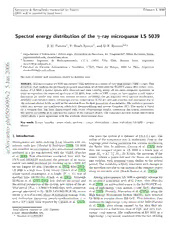
Spectral energy distribution of the gamma-ray microquasar LS 5039
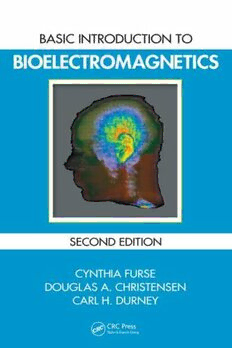
Basic Introduction to Bioelectromagnetics,
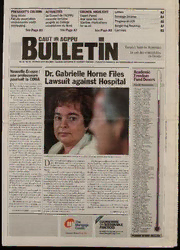
CAUT Bulletin December 2006 (Volume 53, Number 10)
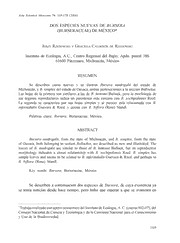
DOS ESPECIES NUEVAS DE BURSERA (BURSERACEAE) DE MÉXICO

Sonic the Hedgehog #37
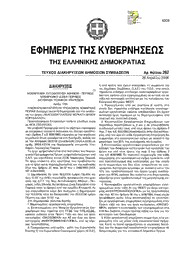
Greek Government Gazette: Part 7, 2006 no. 262

Collected Works of CG Jung

2006 WEAVER HIGH YEARBOOK HARTFORD CT
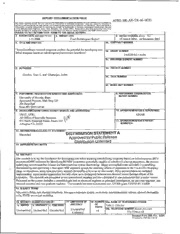
DTIC ADA443237: Interdisciplinary Research Project to Explore the Potential for Developing Non-Lethal Weapons Based on Radiofrequency/Microwave Bioeffects
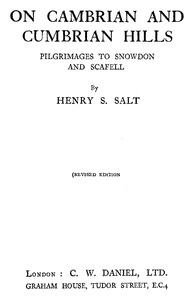
On Cambrian and Cumbrian Hills: Pilgrimages to Snowdon and Scafell by Henry S. Salt

c 2009 by Kyoungsoo Park
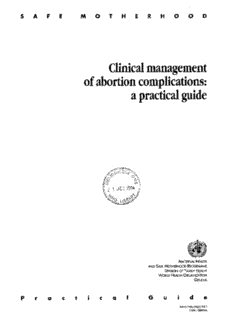
C ' ical management of abortion complications - World Health
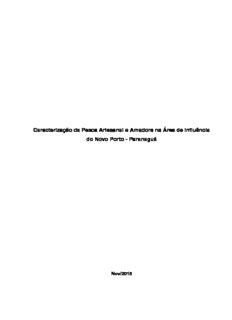
Caracterização da Pesca Artesanal e Amadora na Área de Influência do Novo Porto
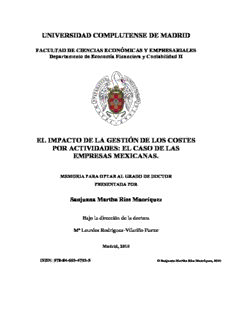
Capítulo I. Introducción
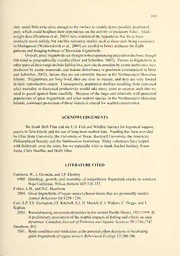
Demography and reproductive ecology of great frigatebirds
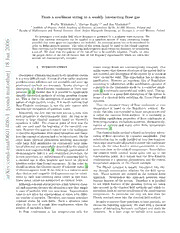
From a nonlinear string to a weakly interacting Bose gas
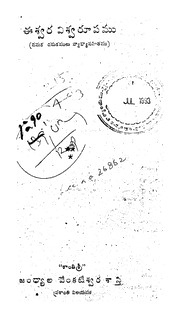
Eeshwara Vishwa Rupamu

